150 Years of Classics at Cornell
When Elder George Bowman, an itinerant Methodist preacher, decided to build a college in Mount Vernon, he made sure that the study of the Greek and Latin classics should be at the heart of the curriculum. And although Classics has undergone some ups and downs since the founding of the Iowa Conference Seminary in 1853 (renamed Cornell College in 1857), it has been a part of the curriculum since the beginning. By tracing the history of Classics at Cornell College, it is possible to understand the changes that the discipline of Classics has undergone throughout the past 150 years.
The Nineteenth Century
From the beginning, Cornell--like so many other colleges at the time--featured a strong classical component. The four year program as defined in the 1856 catalogue, for example, included eight courses in Latin, six courses in Greek, seven each in mathematics and science, and eight in courses that would now be classified as philosophy or religion. In addition, there was one course each in rhetoric and logic, political economy, and '"universal'" history. In these first years, the Greek texts most frequently read were Xenophon's Anabasis and Memorabilia, Greek New Testament, Herodotus' History of the Persian Wars, Homer's Iliad or Odyssey, and Demosthenes On the Crown. Typical Latin texts included Vergil's Aeneid, Tacitus' Agricola and Germania, Cicero's On Old Age and On Friendship, Horace's Satires and Epistles, and Livy's History of Rome.
In order to be admitted to Cornell, students were expected to have considerable knowledge of Latin and Greek. The 1875 catalogue, for example, required Greek and Latin prose composition, two books of Xenophon's Anabasis (in Greek), and in Latin four books of Caesar's Commentaries (on the Gallic Wars) and six orations of Cicero. It was not until 1916 that knowledge of Greek and Latin was waived for admission to the Bachelor of Arts degree.
Why Classics were considered central to the curriculum in the nineteenth century can be seen most clearly in the Cornell College motto: Deus et Humanitas (God and Humanity). The first part of the motto, Deus, makes sense, given that Bowman was a Methodist evangelical preacher and that nearly two-thirds of Iowans claimed no church affiliation in the 1860 census! Harper's Latin Dictionary defines the second part of the motto, humanitas, as '"liberal education, humane and gentle conduct toward others, philanthropy, kindness, politeness, and elegance of manner and language.'" In other words, a liberal education rooted in the Classics, Bowman hoped, would provide a means to the first goal and would create a strong civilizing effect on the Iowa frontier.
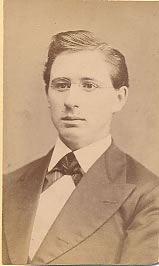
William Harmon Norton
Notable Faculty
The liberal education that Cornell strove to provide can be seen in the careers of some of her earliest faculty. David Wheeler, the college's first professor of ancient languages (1853-54, 1857-61), later served as U.S. Consul in Genoa and correspondent for the New York Tribune, professor of English at Northwestern University, Editor of The Methodist, and President of Allegheny College in Pennsylvania. William Harmon Norton, hired in 1874 as instructor of Latin and Greek, was not only Professor of Greek (1881-90), but also Professor of Geology from 1881-1924, fellow of the Geological Society of America, President of the Iowa Academy of Science, author of the widely used textbook Elements of Geology, prominent researcher on ground-water and water resources, and trustee of Cornell College.
Literary Societies
The importance of Classics was not confined to the classroom. Literary Societies--many given Greek and Roman names, such as the Philomathean, Amphictyon, and Aesthetician--were also active in the first 75 years of the college and kept abreast of recent developments. They sponsored lectures on Schliemann's excavations of ancient Troy, staged scenes from Greek tragedies, such as Sophocles' Antigone and Electra, argued the merits of '"The Habitual Study of the Classics,'" and published '"A Plea for Oratory.'"
Curricular Innovations
Yet change, ever gradual, was on the way. Already in the 1885 the faculty recognized the need for lectures on Greek and Roman culture in conjunction with reading Greek and Latin authors. For example, lectures on the Athenian constitution accompanied study of Lysias' Orations, lectures on Greek Philosophy accompanied Plato's Apology and Crito, and lectures on Greek mythology accompanied readings from Homer's Iliad. In addition, later in the 19th century, tragedy was introduced to the curriculum, especially Aeschylus' Prometheus and Sophocles' Oedipus the King.
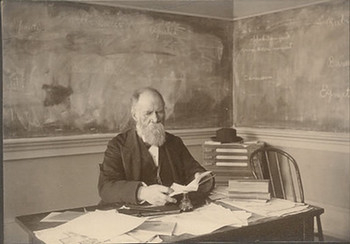
Hugh Boyd
At the same time, the study of Latin was transformed by Prof. Hugh Boyd, who espoused the still relatively new '"Roman [classical] pronunciation.'" Some idea of the way a typical class period might have looked like during this era can be gleaned from the 1894 catalogue, which emphasized not only translation, memorization, and recomposition of passages into Latin, but also '"the reading and re-reading [aloud] of the Latin text, carrying the thought through the medium of the Latin expression, reproducing the energy of the original writer or speaker, and conveying the sense purely through the voice of the reader and the ear of the listener,'" '"the paraphrasing in Latin of the Latin text,'" and '"an oral inquisition into the meaning and forms of the text, through Latin questions extemporized by the teacher and answered extempore by the learner.'"
The Twentieth Century
While the nineteenth century emphasized breadth of knowledge (it was not uncommon for a single professor to teach several subjects at Cornell), the twentieth century brought with it a rise of professionalism within academia organized along disciplinary lines. As a response to this new notion of higher education, the college in 1916 introduced majors and minors, no longer requiring the relatively rigid course of study that characterized the nineteenth century. Modern languages--French, German, and Spanish--now competed with Greek and Latin to fulfill the foreign language requirement. In addition, distribution requirements in humanities, fine arts, social sciences, and sciences were introduced. As a result, students had a wider range of electives to choose from and could graduate with a bachelor of arts without taking any Latin or Greek courses.
Yet classics continued to attract students. Although Greek and Latin ceased to be separate departments in 1932, until around 1950 the new department of Classical Languages and Literature offered a curriculum that looks remarkably familiar. The two-year foreign language requirement in Latin featured one year of elementary Latin, followed by Cicero and Vergil in the second year, with advanced courses in Roman comedy, prose composition, Pliny, Horace, Tacitus, and Juvenal. In Greek, the first year of elementary Greek was traditionally followed by Xenophon's Anabasis, Plato's Apology, and Lysias' Orations or the Greek New Testament. In addition, over the years a variety of culture courses in English translation were offered, not as lectures to augment a reading course in an ancient author, but as courses to attract students who may not have had any Latin or Greek.
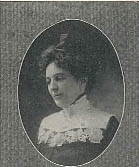
Evelyn Carrie Riley
Notable Faculty
While seven women had taught Latin or Greek since the opening of the college in 1853 and many had completed the Classical Course, it was only in the first half of the twentieth century that the first woman--Evelyn Carrie Riley (1903-17)--was appointed full professor in Latin. And while Charles T. Goodwin (1890-92) was the first Classicist at Cornell to hold a Ph.D., it was not until 1918 that it became the norm for professors to hold this degree.
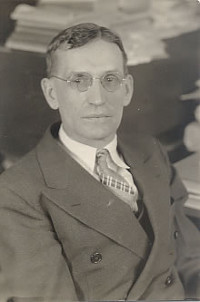
Mark Hutchinson
An additional sign of the increasing professionalization of Classics was that Mark Hutchinson (1926-50) organized several Classics conferences at Cornell attended by 150-200 teachers and scholars. He also specialized in assessment and authored the Hutchinson test for Latin.
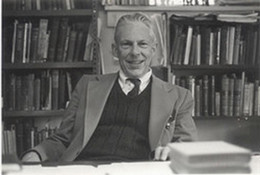
John Crosset
By the 1960s, Classics began to be seen as less relevant with the onset of the Vietnam War, the civil rights movement, and the women's movement. Yet interest revived in the 70s under the influence of John Crossett, recipient of the APA's first award for Excellence in Teaching.
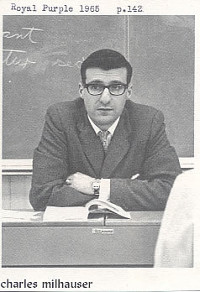
Charles Milhauser
Unfortunately, the college's overall enrollment plummeted and when Crossett died in 1981, the Greek major was dropped (the Latin major was eliminated in 1977), and the college authorized no full-time replacement until six years later in 1987. Fortunately, Charles Milhauser, who by then served as full-time Registrar, kept Classics alive by teaching Latin part-time during the interim.
The Present and Future of Classics at Cornell
Since 1987, the program has been revised to attract the widest array of students. The new major in Classical Studies offers a balance between language classes, literature in translation, and courses in culture, art, and history. The program enrollments have increased so that there is often a waiting list to take Latin, and Greek, which is offered every third year, often enrolls 16-25 students. Following the lead of Professor Hugh Boyd in the 19th century, oral Latin (and Greek) is once again part of beginning language classes. Intermediate Latin students regularly stage a bi-lingual, outdoor production of Roman comedy. And students utilize on-line resources such as Perseus (a digital Greek and Latin library), visit virtual Rome at the VRoma MOO, and use homegrown websites for learning beginning Greek such as Ariadne: Resources for Athenaze. Thus, the Classics--transformed to reach a new generation of students--continue to fulfill Elder Bowman's desire that they form an essential part of a liberal arts curriculum.
Readers are invited to share stories about their own Latin and Greek teachers and their experiences learning Latin or Greek, whether at Cornell or elsewhere. Please send comments to John Gruber-Miller, jgruber-miller@cornellcollege.edu.
